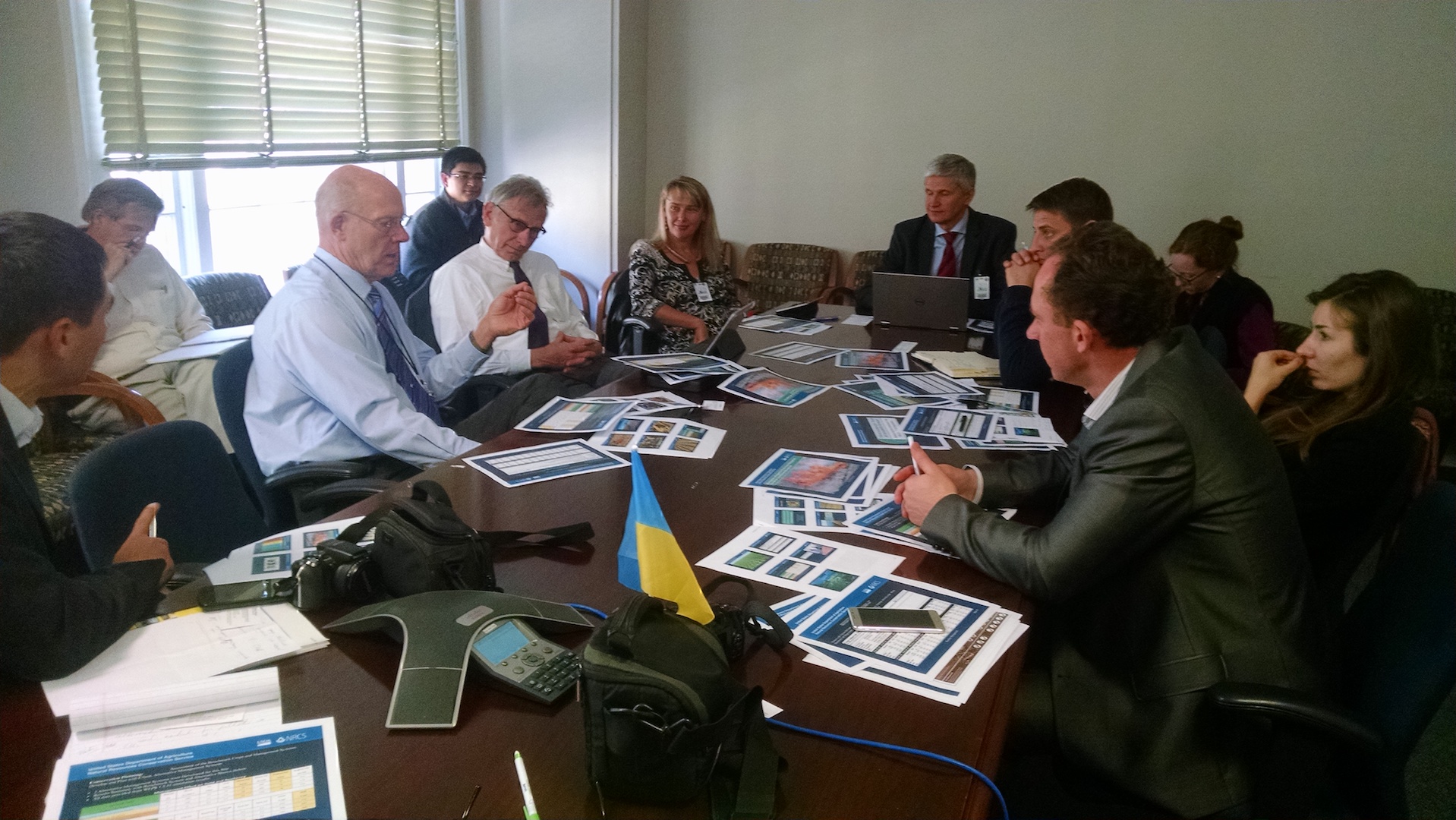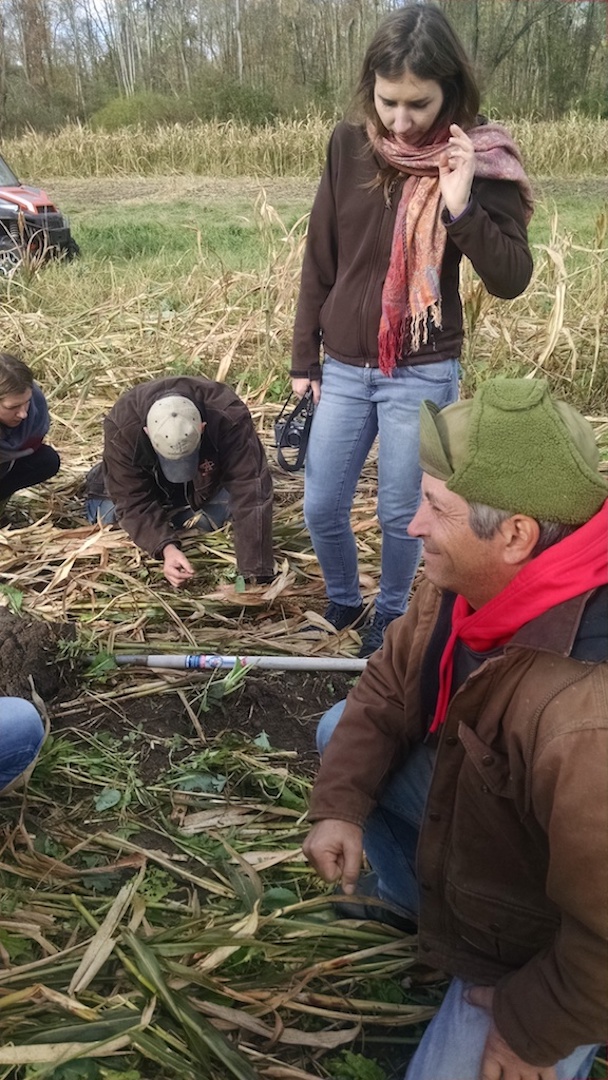by Dr. Gail Stevenson Meeting with the USDA's Foreign Agricultural Service
Meeting with the USDA's Foreign Agricultural Service
The International Cryosphere Climate Initiative (ICCI) organized a study tour for six Ukrainian farmers and experts to the United States in October to explore alternatives to open burning with the support of TMU. The group visited university agricultural research stations and numerous farms in Pennsylvania through an excellent collaboration with the Pennsylvania State College of Agriculture and the Pennsylvania No-Till Alliance, after which the group travelled to Washington, D.C. to meet with experts and policymakers.
ICCI is a network of senior policy experts and researchers working with governments and organizations to create, shape and implement initiatives designed to preserve as much as possible of the Earth’s ice and snow regions, which are uniquely sensitive to climate dynamics. ICCI’s open burning program has worked in Russia, where open agricultural burning impacts the Arctic, since 2010, as well as Southeast Asia and South America, where open burning impacts the Himalayas and Andes respectively.
Agricultural burning releases black carbon (soot) into the atmosphere, where it travels along the prevailing winds, in this case to the Arctic, where it falls on the ice and darkens it, hastening melting. Burning impacts human health and also soil quality by compacting and destroying the humus and organic matter that makes Ukraine’s “black earth” soils so productive. Nonetheless, the Ukrainians agreed that almost all Ukrainian farmers burn off stubble, either before planting or after harvesting, and this anecdotal information is substantiated by satellite burn maps that were presented. Peak seasons are March/April (spring planting) and July/August (fall harvesting). According to the group, reasons for burning include:
Pest and insect control
Weed control
Tradition and lack of awareness of alternatives
Short-term leasing discourages long-term planning (there was disagreement on the importance of this)
 Studying the soil with Gerard Troisi and Luke Criswell
Studying the soil with Gerard Troisi and Luke CriswellThe group attended several lectures and travelled to fields and farms and learned that good alternatives exist, especially those that integrate low-till or no-till methods, which involve keeping the soil covered as much as possible to retain moisture and nutrients, protect the soil and decrease run-off.
Local farmers demonstrated methods for planting several crops together (inter-seeding one crop in alternate rows with another) or sequentially to balance nutrients. The stubble can be cut low and left in the fields to cover the soil, then the next crop can be planted right through it. Alternatively, one or several winter crops can be planted to keep the soil covered and develop roots that transfer nutrients, aerate the soils and create water channels. Cover cropping also transfers the sun’s energy into the soil all year long, not only during the 100-day growing season. Even where farmers tilled the soil, there is no burning as the residue either stays in place, is harvested for alternative uses, or is mowed down and ploughed under. The residue breaks down more slowly in a cold climate, so farmers make the stubble more manageable by chopping and moving it into rows. Sometimes it is baled and sold to dairy farms for bedding or for mushroom substrate.
Another method that is particularly beneficial in cold climates like the U.S. northern plains and Ukraine is strip tillage where strips are low-tilled into the soil so that it can warm up before planting. Conservation agriculture methods such as direct seeding, preservation of stubble to hold moisture, cover crops and crop rotation, as well as alternative uses for crop stubble as bio-energy or livestock bedding and feed, are all in use in Pennsylvania and all hold promise as win-win alternatives to burning in Ukraine.
Our group experienced first-hand that many alternatives to burning exist. These methods represent positive, economically viable solutions that improve soil quality and yields, food security, the viability of agricultural communities, and regional health – and at the same time decreasing one of the main sources of black carbon warming the Arctic. At the conclusion of the group's visit, a participant shared the impact of the time in the US: "I can't wait to go home and try out some of these methods."
–––––––Dr. Gail Stevenson is U.S. Open Burning Program Director for ICCI and is based in Vermont. See www.iccinet.org for more about its programs.